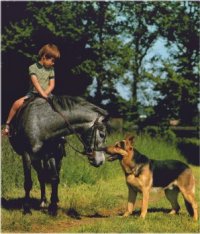
"Remarkable in his unswerving loyalty to his master, irrepressible in his
high spirits, never idle, always in motion, good-natured but not a flatterer, a
constant pleasure to the eye."
This is the description that Prussian Captain of Cavalry Max von Stephanitz, who
founded the German Shepherd Club over a hundred years ago, used to describe Horand
von Grafath, the spirited ancestor of all German shepherd dogs which was born on
the first of January 1895 and first registered as Hektor Linksrheim before being
acquired by the captain. Horand was the model from which the guidelines for breeding
German shepherd dogs were developed.
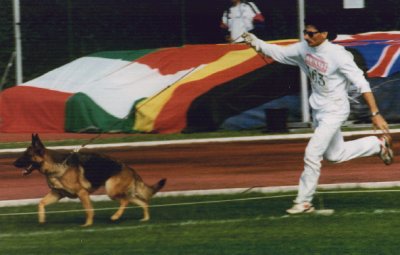
Where the character and nature of this dog are concerned, the goals of German shepherd
dog breeding have not changed since 1899. The strict breeding regulations, which
the German Shepherd Club of Germany continues to enforce rigorously, guarantee that
only dogs conforming to the breed standard are used for breeding.
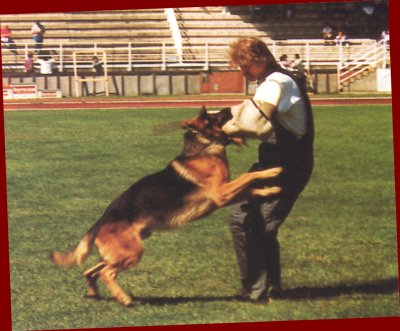
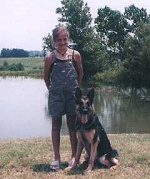
Despite all the good qualities that
German shepherd dogs have, it is often said of them that they are pugnacious dogs,
aggressive and unpredictable in their behavior. How do characterizations of this
kind fit in with our overall picture of the German shepherd dog?
Max von Stephanitz provides us with an explanation for the seemingly contradictory
reports we have about the temperament and behavior of this dog.
..."Because, unfortunately, he was not trained in his youth, he was, if left to
his own devices, the worst of mischief-makers, the wildest of fighters, and an intractable
nuisance. His faults were the faults of his education, not of his nature. He suffered
from underutilization of his great need for activity, for if someone worked with
him, he was blissfully happy and the most obedient of dogs."
Max von Stephanitz' words remain just as valid today as they were years ago. Anyone
who acquires a German shepherd dog should keep in mind that this dog, with the special
demands it places on its master, is not just a dog like any other. The relationship
between dog and master is based on mutuality, on give and take from both sides.
If this dog's great demands on its master's affections are met, it will respond
with correspondingly great obedience and performance. Indeed, the German shepherd
dog deserves the title "Noble with Natural Beauty."
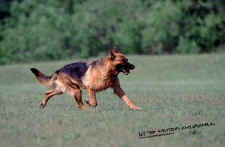
The pedigree dog has elegant, yet flowing, lines, an intelligent expression, a shining
coat, and erect ears. It loves human companionship and will respond quickly to its
owner's moods.
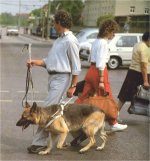 The German shepherd dog - a breed that becomes perhaps
more thoroughly "imprinted" to a master than any other - can go on to further training
only if it brings the prerequisite qualities to the speciality in question. Only
experts can judge whether a specific dog has the necessary qualities to serve as
a utility dog. The dogs are tested before they set out on a special course of training,
and even during it some are weeded out according to strict criteria.
The German shepherd dog - a breed that becomes perhaps
more thoroughly "imprinted" to a master than any other - can go on to further training
only if it brings the prerequisite qualities to the speciality in question. Only
experts can judge whether a specific dog has the necessary qualities to serve as
a utility dog. The dogs are tested before they set out on a special course of training,
and even during it some are weeded out according to strict criteria.
Any specialized training requires absolute obedience, excellent scent discrimination.
good tracking ability, an even temper, courage and endurance, fearlessness, and
physical strength.
In some situations dog and master can receive training simultaneously. If you live
in the mountains, for instance, both you and your dog can earn certification for
avalanche rescue service. Both of you will be drilled in emergency situations. Or
the dog can be entrusted to a professional dog trainer whom it will then also follow
with total loyalty after the training.
German shepherd dogs can he trained not only as avalanche rescue dogs but also as
police dogs, assistants in fighting drug traffic, Seeing Eye dogs, and now.in the
United States, guides for deaf people. The Red Cross and other similar organizations
also use them as search dogs after earthquakes or other catastrophes. Only exceptionally
talented animals are eligible for this kind of special training.